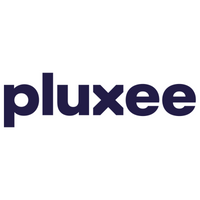Applying prevention and resilience to your health and wellbeing strategy
The overarching people risks on HR professionals’ minds include skills updating, changing regulations, the global political landscape, and AI integrations, to name a few.
When we refocus with a health and wellbeing lens, the people risks change to stress and burnout, mental health, and financial wellbeing.
These two perspectives do not sit in isolation.
The global political environment is causing a climate of uncertainty.
Locally, the NIC and National Minimum Wage increases caused an initial spike in redundancies and have impacted pay increases.
As Pluxee UK shares in its Strengthening Your Employee Value Proposition, A Cost-Neutral Strategy guide, the median pay increase in January 2025 was 3%, which is 1 to 1.5% lower than in previous years.
Yet, with the price of doing business increasing, the cost of living may also climb.
The rise of AI is creating anxiety among many workers, and the DEI U-turn in the US is causing concern for those championing equality.
Adapting your health and wellbeing strategy
When considering how employers must adapt their health and wellbeing strategy, two key factors come to mind: prevention and resilience.
Financial wellbeing
When employees are struggling financially, it causes stress.
This stress worsens other wellbeing issues, both physical and mental. That’s why a holistic approach is essential.
Employees with money worries may also forgo activities that boost their physical and mental wellbeing, such as going to the gym and socialising.
Pluxee UK’s guide to creating a cost-neutral employee value proposition (EVP) explores the topic of pay increase inequity and presents a cost-neutral strategy to level the playing field.
Can employee benefits, such as discounts and cashback, deliver more value to employees than a 3%+ pay increase?
Yes. When embedded into employees’ lives, they can.
Financial wellbeing benefits can stretch salaries further, help employees set funds aside for the future or a rainy day, and provide the education they need to have the confidence to make informed financial choices.
Mental wellbeing
In some cases, AI is causing job insecurity, affecting psychological safety in the workplace.
AI advances bring change and opportunity, but understandably, some people fear what it may mean for their future.
Employee assistance programmes (EAPs) are fundamental for any mental health toolkit, offering preventative and in-the-moment support.
Still, there are other ways to enhance mental resilience when addressing AI insecurity.
Employers need the right skills to help their businesses grow, and employees need security and stability to support their mental resilience.
By focusing on upskilling, you’re tackling future people risks, but this approach is also part of a holistic wellbeing strategy.
When employers prioritise an environment of continuous learning, it shows employees that you’re invested in their future, giving them a stronger sense of self-worth, ensuring they feel valued, and enhancing their mental wellbeing and resilience.
Physical wellbeing
The UK is experiencing an increase in musculoskeletal (MSK) issues, particularly those resulting in long-term sickness absence.
Hybrid working is one factor that may be contributing to the increase.
People working from home are less likely to get up and move around.
Another issue is inadequate desk space, which negatively affects posture.
Hybrid working is here to stay.
It reduces commuting costs, supporting financial wellbeing, and eliminates commuting time.
When employees don’t have to travel, they regain some time, which they can use to sleep a little longer, exercise, or tackle life admin, giving them more balance and helping to eliminate the risk of burnout.
The proactive and preventative response to MSK is to ensure all employees have an appropriate and ergonomic workspace at home.
Providing all employees with an allowance to create a good working environment is more cost-effective than the cost of absenteeism.
Likewise, encouraging employees to incorporate regular movement into their daily routines or making an active lifestyle more affordable will also enhance their physical resilience.
A holistic approach to building resilience
A holistic preventative health and wellbeing strategy that prioritizes resilience and the ability to withstand future changes will help eliminate future health risks, such as burnout, musculoskeletal (MSK) issues, inactivity, financial stress, and mental ill health.
Be agile in your approach, using data to keep pace and evolve with changing environmental, business, and people needs.
Supplied by REBA Associate Member, Pluxee UK
Pluxee UK, is a leading employee benefits and engagement partner that opens up a world of opportunities to help people enjoy more of what really matters in their lives.








